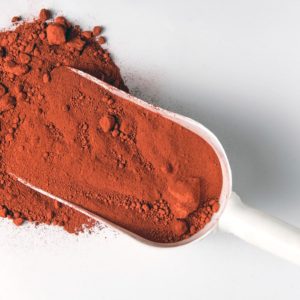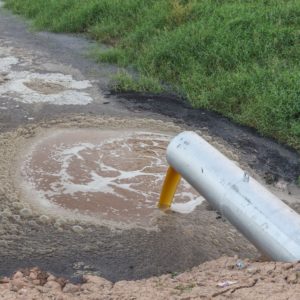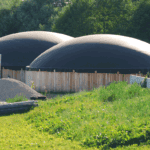The Essential Role of Iron Oxide in Sewage Treatment Plants: Ensuring Efficient Purification
In the realm of environmental science, many unsung heroes play crucial roles in keeping our environment clean and safe. One of these heroes is iron oxide, an element that has become a key player in modern sewage treatment.
In this article, we will explain how iron oxide is harnessed in sewage treatment processes to ensure efficient purification, delving into its functions, benefits, and why it is a critical part of modern sewage treatment.
Understanding Sewage Treatment
Before diving into the specifics of iron oxide and its role in sewage treatment, it’s important to first understand what sewage treatment entails. In simple terms, sewage treatment is the process of removing contaminants from wastewater, primarily from household sewage. The treatment involves physical, chemical, and biological processes to remove these contaminants and produce environmentally safe treated wastewater (or treated effluent). It’s a process that is as complex as it sounds, but crucial for maintaining the cleanliness and safety of our water resources.
What is Natural Iron Oxide?
Is a chemical compound composed of iron and oxygen. It is known for its rust-red color and is commonly found in a variety of rocks and soils. However, its uses extend far beyond giving Mars its characteristic red hue. Iron oxide is used in a variety of industries, from pigment production and ceramics to its pivotal role in sewage treatment.
Iron Oxide and Its Role in Sewage Treatment
But why is iron oxide such an important player in sewage treatment? It all boils down to chemistry. Iron oxide is used to remove phosphorus from wastewater, a process known as phosphorus removal. The chemical reaction between iron oxide and phosphorus results in the formation of a precipitate, which can then be easily removed. Without this process, phosphorus can end up in our bodies of water, causing excessive algae growth that can lead to significant environmental damage.
Benefits and Risks
There are several reasons why iron oxide is the preferred choice for phosphorus removal in sewage treatment. For starters, it is abundant and easy to source. Secondly, it is highly efficient at removing phosphorus from water. This is because phosphorus has a strong affinity for iron, meaning it will naturally bond with iron oxide when both are in the same environment. Finally, the use it in sewage treatment has proven to be safe and non-toxic for the environment, making it a sustainable choice for this vital process. However, it’s important to handle it carefully and follow appropriate safety guidelines, as in certain contexts and large quantities, it can pose health risks to humans.
Iron Oxide Mechanics in Sewage Treatment
The mechanics of iron oxide in sewage treatment is fascinating. The process begins with the addition of iron salts, which then react with the phosphorus in the wastewater. This reaction forms iron phosphate, a solid material that precipitates out of the water. This precipitate can then be separated from the water, effectively removing the phosphorus from the wastewater.
How is Formed and Where is it Found?
Iron oxide is formed when iron comes into contact with oxygen. This process can happen naturally through the oxidation of iron in the air or can be industrially manufactured. Natural iron oxide is commonly found in a variety of rocks and soils, and can be extracted for use in a variety of industrial applications, including sewage treatment.
Modern Methods Utilizing Iron Oxide
Advancements in technology and science have allowed for the development of new techniques utilizing iron oxide in sewage treatment.
Frequently Asked Questions
What is natural iron oxide?
Is a chemical compound composed of iron and oxygen. It is commonly found in a variety of rocks and soils.
Why is iron oxide used in sewage treatment?
Is used in sewage treatment to remove phosphorus. It reacts with phosphorus to form a precipitate that can be easily removed.
What are the uses of natural iron oxide?
Is used in a variety of industries, from the production of pigments and ceramics to its crucial role in sewage treatment.
Where is natural iron oxide found?
Is commonly found in a variety of rocks and soils.
How is natural iron oxide formed?
Iron oxide is formed when iron comes into contact with oxygen. This process can happen naturally through the oxidation of iron in the air or can be industrially manufactured.
What are the benefits of natural iron oxide?
Iron oxide is abundant and easy to source, highly efficient at removing phosphorus from water, and safe and non-toxic for the environment.
What are the risks of natural iron oxide?
In certain contexts and in large quantities, iron oxide can pose health risks to humans. It’s important to handle it carefully and follow appropriate safety guidelines.
What is the process of phosphorus removal using iron oxide?
Iron salts are added to the wastewater and react with the phosphorus to form iron phosphate, a solid material that precipitates out of the water. This precipitate can then be separated from the water, effectively removing the phosphorus from the wastewater.
Is iron oxide harmful to the environment?
No, in sewage treatment is considered safe and non-toxic for the environment.
What are the challenges of using iron oxide in sewage treatment?
One of the main challenges is the disposal of the iron phosphate precipitate. However, research is being conducted to find beneficial uses for this byproduct.
What are some modern techniques using iron oxide in sewage treatment?
Modern techniques include the use of nanotechnology to create nanometer-sized iron oxide particles, which can improve the efficiency of phosphorus removal.
Is iron oxide efficient at removing phosphorus?
Yes, phosphorus has a strong affinity for iron, meaning it will naturally bond with iron oxide when both are in the same environment. This makes iron oxide highly efficient at removing phosphorus from water.
For more information visit our website.










